A spritz of fresh lemon zest added an invigorating citrus twist to the soup. It was a delightful flavor infusion that elevated the dish!
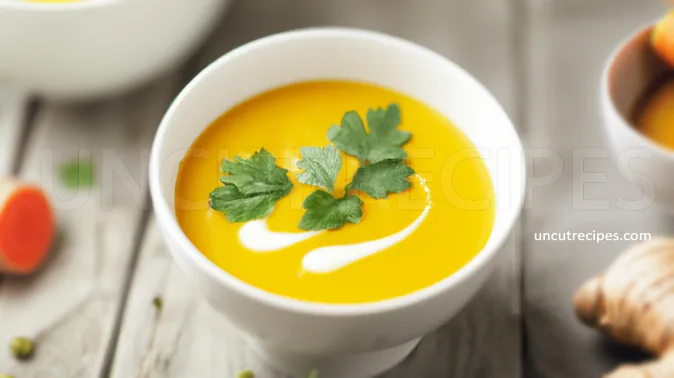
Ah, the journey of the humble carrot. There's a certain whimsy in imagining how it leaves the cozy earth it grew in, gets lovingly scrubbed clean, and finally ends up in a soup pot in our kitchens. Let me tell you a different story, a tale spun from the earthy, sweet scent of carrots mingled with the kick of ginger.
Growing up in a bustling city, I was as far removed from farm life as can be. The concept of seasons influencing what we ate was foreign to me until one uneventful summer when I visited a charming little countryside town. I was immediately swept up in the simplicity of life and the way the community treasured the bounty each season brought.
During this trip, I met an old farmer named Joe, who, with weathered hands and sparkling eyes, spoke passionately about his farm and the carrots he grew. Joe was particularly proud of his autumn harvest, saying that the cool weather made his carrots sweeter. Intrigued, I decided to bring some home.
With Joe's carrots and the recipe of an old friend in mind, I decided to embark on a culinary adventure. Ginger, a staple in my friend's Asian kitchen, was an ingredient I was initially skeptical of, but it soon won me over with its zesty flair that perfectly balanced the sweetness of the carrots. The creamy butternut squash, tenderly baked until it was soft, was the glue that held these flavors together.
The first time I attempted to make this Carrot and Ginger Soup, it was a bit of a spectacle. Olive oil splattering, onion-induced tears, and a blender mishap later, I managed to produce a dish that, despite its simplicity, was rich in flavor and full of heart.
Every autumn since then, when the leaves start to fall and the air gets a nip, I get a craving for this particular soup. It's my way of savoring the season, a little homage to that countryside town, old farmer Joe, and the beautiful simplicity of harvesting and enjoying seasonal produce.
Today, I'm sharing this recipe with you, not as a seasoned chef or a professional food blogger, but as someone who enjoys the magic that happens when fresh ingredients meet love and care. So, whether you're a novice cook or a seasoned chef, this Carrot and Ginger Soup is an invitation to explore, to taste, and to connect with the journey of the ingredients. Let's get cooking!
JUMP TO:
INGREDIENTS:
Butternut Squash: As a core component of the soup, it lends a delightful sweetness and a creamy texture when cooked. When selecting a butternut squash, look for one that feels heavy for its size. The skin should be hard, smooth, and free of cuts or punctures. The color should be uniform and deeply beige – a greenish hue may indicate the squash is underripe.
Carrots: Opt for carrots with a vibrant orange color. The tops should be fresh and green, if present. Larger, older carrots tend to be fibrous and less sweet, so for the soup, smaller, tender carrots would be ideal. The sweetness of the carrots pairs exceptionally well with the spiciness of the ginger and the creaminess of the squash.
Fresh Ginger: This ingredient brings a spicy, aromatic edge to the soup, contrasting the sweetness of the other ingredients. Look for ginger root with a smooth, shiny skin that's taut, not wrinkled. The piece should feel heavy and firm, not light and shriveled.
Heavy Cream: This ingredient gives your soup a velvety richness that's hard to beat. However, if you want to keep things lighter, you could substitute it with Half-and-Half, which is a blend of equal parts whole milk and light cream, or a dairy-free alternative like coconut cream. If you're making your own Half-and-Half, simply mix together 1 part whole milk with 1 part light cream.
MAIN STEPS:
Butternut Squash Roasting: The timing in the oven is crucial. A well-roasted butternut squash intensifies the sweetness and provides a caramelized flavor, but be careful not to overcook it as it can become too soft and mushy, impacting the texture of the soup.
Aroma Base: When you're sautéing your onion and garlic, be careful not to burn them. This forms the aroma base of your soup. You're looking for a translucent, not browned, onion to ensure a subtly sweet flavor that doesn't overpower the other ingredients.
Tenderness of Vegetables: Pay close attention to the point when your carrots and ginger become tender. Overcooking can lead to a loss of vibrant flavors and essential nutrients. On the other hand, undercooked carrots won't puree well and will affect the overall texture of your soup.
Blending: Make sure the soup mixture has cooled down a bit before blending to avoid a steam build-up, which can potentially cause the blender lid to pop off. When blending, start at a low speed and gradually increase to avoid splattering and to ensure a smoother consistency.
Adjusting Thickness: While this is a thick soup, if you find it too dense for your liking, remember to add water gradually. Adding too much at once can drastically alter the consistency, making it more of a broth than a cream-based soup.
Seasoning: When seasoning your soup, bear in mind the potency of ground cinnamon. It's a warming spice that can easily overwhelm the other flavors if you add too much. Start with a small amount and adjust as necessary.
Presentation: The final drizzle of cream can dramatically elevate the aesthetic appeal of your soup. To achieve a gourmet look, try lightly whipping the cream before drizzling to give it some body and ensure it floats on top rather than sinking into the soup.
SERVED WITH:
Starter: Goat Cheese and Pear Salad (France): This elegant French salad consists of fresh, ripe pears, creamy goat cheese, and a delicate honey vinaigrette on a bed of mixed greens. The subtle sweetness of the pear and the tanginess of the goat cheese complement the warming Carrot and Ginger Soup perfectly.
Side Dish: Rosemary Focaccia Bread (Italy): This Italian bread, infused with fresh rosemary and sea salt, is perfect for sopping up every last drop of your flavorful soup. The hint of rosemary enhances the soup's earthy notes.
Main Course: Baked Salmon with Lemon Dill Sauce (Norway): A classic Norwegian dish, the salmon's rich flavor is enhanced by the light, citrusy sauce and perfectly complements the creamy soup. The refreshing dill notes echo the herbaceous undertones of the soup.
Second Course: Roasted Beet and Quinoa Salad (Middle East): This colorful and nutritious dish has a wonderful balance of earthy beets, fluffy quinoa, and a tangy vinaigrette, which provides a lighter counterpoint to the soup and salmon.
Dessert: Honey Roasted Fig and Almond Tart (Greece): This dessert brings together the warm sweetness of roasted figs, the crunch of almonds, and the richness of honey in a delicious tart. Its not-too-sweet profile will end the meal on a delightful note.
Cake: Carrot and Walnut Cake with Cream Cheese Frosting (United Kingdom): This classic British cake mirrors the flavors of our main soup and provides a sweet and satisfying conclusion to the meal, while the walnuts add a pleasant crunch.
Drink: Ginger and Lemon Infused Green Tea (Japan): This warm, comforting drink enhances the ginger flavors in the soup and throughout the meal. The lemon's freshness can also help balance the hearty and rich flavors of the overall meal.
ALTERNATIVES:
Starter: Carrot and Ginger Miso Soup (Japan): A refreshing departure from the creamy texture of our soup, this Japanese dish combines carrots and ginger with miso paste and tofu. It's light, nutritious, and full of umami flavor.
Side Dish: Ginger Glazed Carrots (United States): This classic side dish from the United States features carrots beautifully glazed in a sweet and spicy ginger sauce. The caramelization of the carrots adds depth to their natural sweetness, nicely contrasted by the heat of the ginger.
Main Course: Carrot and Ginger Stir Fry (China): This vibrant Chinese dish combines the sweetness of carrots with the fiery kick of ginger, along with other colorful vegetables and your choice of protein, all tossed in a tangy soy sauce.
Second Course: Ginger Carrot Dal (India): A hearty and spicy lentil stew with carrots, ginger, and a medley of aromatic Indian spices. It's warm, comforting, and packed with plant-based protein.
Dessert: Carrot Halwa (India): This is a popular Indian dessert made from grated carrots, sugar, ghee, and milk. The addition of cardamom and a topping of nuts make it a rich and flavorful treat.
Cake: Ginger Spice Cake (Germany): This moist and flavorful cake from Germany gets its kick from fresh ginger and a blend of warm spices. It's often topped with a tangy lemon glaze to balance out the spices.
Drink: Carrot and Ginger Smoothie (Global): A healthy and refreshing beverage enjoyed worldwide. The sweetness of the carrots is balanced by the warmth of ginger, and the addition of a citrus fruit like orange or lemon brings a refreshing tang.
HISTORY:
Carrot and Ginger Soup, a comforting, warm, and wholesome dish, has a history that's as rich and vibrant as its color. With roots tracing back across continents, this humble soup carries with it the culinary stories of many cultures.
Carrots, the main ingredient of our soup, have been cultivated for thousands of years. Originating in Persia (now Iran and Afghanistan) around 5000 years ago, they were initially grown for their aromatic leaves and seeds, not their roots. It wasn't until the Middle Ages in Europe that carrots became the sweet, orange variety we're familiar with today.
Ginger, the spicy kick to our soup, boasts an equally long history, finding its roots (quite literally!) in China. Celebrated for its medicinal properties and its flavor, ginger has been a global culinary treasure since ancient times, traded along the famed spice routes to Europe, the Middle East, and beyond.
Though it's hard to pin down the exact origin of Carrot and Ginger Soup, we know that soups in general have been a vital part of global cuisine since prehistoric times. With the invention of waterproof containers, our ancestors began to boil water and add whatever ingredients they had on hand, creating the first rudimentary soups.
What makes our soup unique, however, is the pairing of carrots and ginger. While both ingredients have been common in Asian cuisine for centuries, their merger into a singular, harmonious soup likely happened in more recent times, as fusion cuisine began to take hold. This was particularly true in the late 20th century when, driven by the culinary revolution of California, chefs started combining ingredients and techniques from different cuisines to create innovative and delicious dishes like our Carrot and Ginger Soup.
This soup, with its bright orange color and sweet and spicy flavor profile, quickly became a hit, not just for its taste, but also for its health benefits. The vitamin-packed carrots, immune-boosting ginger, and heart-healthy olive oil make this a power-packed meal that's as good for your body as it is for your taste buds.
TIPS:
Temperature Control: In step 4, the butternut squash is roasted in the oven. You might be tempted to increase the heat to shorten the cooking time, but resist. Slow and steady roasting allows the squash to caramelize, enhancing the sweetness that contrasts beautifully with the spicy ginger in the final soup.
Sautéing: In step 8, the onion and garlic are sautéed until translucent. Make sure not to brown or burn them as it could impart a bitter flavor to your soup. The objective is to sweeten and soften them, setting up a flavor base for the soup.
Ginger: Fresh ginger can vary in spiciness. When you add it in step 10, start with less, then adjust to taste towards the end of cooking.
Tasting and Seasoning: Soup's flavor develops over time, and different ingredients release their flavors at different rates. So, don't rush your seasoning in step 15. Taste as you go and adjust seasoning little by little, allowing the soup to simmer a bit between adjustments.
Blending: In step 12, when pureeing the soup, be cautious if you're using a regular blender - hot soup can explode out of the blender if you're not careful. Either cool the soup a bit before blending or fill the blender no more than half full and hold the lid down firmly with a kitchen towel.
Adding Extra Depth: Consider toasting your spices (like the cinnamon in step 15) in a dry pan for a couple of minutes before adding. This can really wake up the flavors and add a new depth to your soup.
Garnishing: The cream garnish in step 17 not only gives a gourmet look but also adds a velvety texture and balances the soup's flavors. For an extra touch, sprinkle some toasted pumpkin seeds or croutons for crunch contrast.
Recipe Information
Skill Level
|
Time 1 Hour |
Price
|
Serves 4 People |
| Healthiness |
Nutritional Information |
| Ratings (Add Rating & Review) |
Reviews 18 Reviews |
Ingredients:
-
4 cups Water
0.5 medium Butternut Squash
About 4 large Carrots
( peeled and diced )
1 Onion
( diced )
2 tablespoons Olive Oil
1 piece fresh Ginger
( peeled and thinly sliced )
3 cloves Garlic
( crushed or to taste )
Salt
( to taste )
Black Pepper
( to taste )
1 pinch Ground Cinnamon
Optional:
0.25 cup Heavy Cream
Allergens
| Dairy | Sulphites |
Directions:
01 - Let's get started by preheating your oven. You'll want to set it to 175C / 350F degrees.
02 - Now, take your half Butternut Squash and remove the seeds. You can do this easily with a spoon, just scoop them out.
03 - Once that's done, put the Butternut Squash on a baking sheet. Make sure the cut side is facing down. Also, ensure that the baking sheet is greased so the squash doesn't stick.
04 - Now it's time to bake the Butternut Squash. You'll want to leave it in the oven for about 30 to 40 minutes. You'll know it's done when it feels soft when you press it.
05 - Once you've baked the Butternut Squash, let it cool down. Don't rush this part; it will be easier to handle when it's cool.
06 - When the Butternut Squash is no longer hot, use a large spoon to scoop out the flesh, which is the part you're going to use for your soup. The skin can be discarded.
07 - Now let's move to the stovetop. Heat up some Olive Oil in a large saucepan or soup pot over medium heat. The pot should be big enough to hold all your ingredients.
08 - Time to add your chopped Onion and Garlic to the pot. Stir them around in the Oil until the Onion becomes translucent.
09 - Next, pour Water into the pot.
10 - Now add your previously set aside Butternut Squash, along with the Carrots and Ginger to the pot.
11 - Bring everything in the pot to a boil. Let it cook for about 20 minutes, or until the Carrots and Ginger are tender. You can test this by poking them with a fork.
12 - Once everything's cooked, you're going to puree the mixture. You can do this by using a blender or an immersion blender, which is a hand-held device that can be put directly in the pot.
13 - If your Soup is thicker than you like, you can add some Water. But remember, this soup is supposed to be thick and creamy, so only add water if it's really needed.
14 - After blending, put the Soup back into your pot and heat it up once more.
15 - Now it's time to season your Soup. Add a bit of Salt, Pepper, and Cinnamon to give it that extra punch of flavor.
16 - Once everything's hot and seasoned, use a ladle to scoop the Soup into serving bowls.
17 - For a finishing touch, you can drizzle a little bit of Cream over the top of each bowl. This is optional, but it does make your soup look more gourmet. Enjoy!
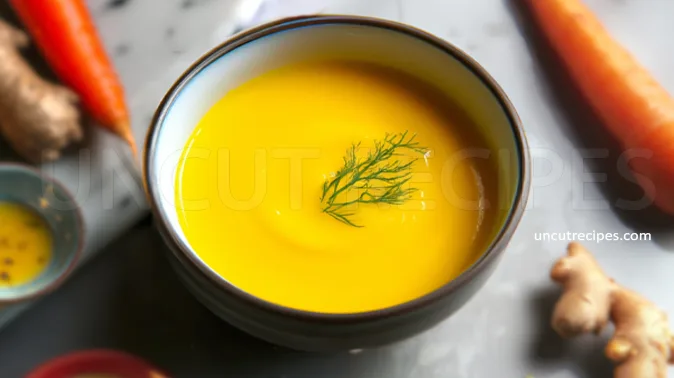
Notes:
Butternut Squash Selection: When choosing butternut squash, look for one that is heavy for its size with a hard, smooth skin free from blemishes or moldy spots. The stem should be intact and the skin should be a uniform beige color.
Alternative for Butternut Squash: If butternut squash is not available, you can substitute it with other winter squashes like acorn squash or pumpkin.
Ginger Prep: Fresh ginger can be quite fibrous. To ensure it cooks down properly and blends smoothly into the soup, slice it thinly against the grain.
On Blending Hot Soup: Blending hot soup can lead to pressure building up in the blender. To avoid this, only fill your blender half full, remove the center cap from the blender lid, cover the hole with a folded clean towel, and hold it down while blending. This allows steam to escape and prevents pressure build-up.
Immersion Blender Alternative: If you don't have an immersion blender, you can use a regular blender or a food processor to puree the soup. You'll need to do this in batches and be careful when transferring the hot soup.
On Consistency: The consistency of this soup is quite flexible, so feel free to adjust to your liking. If you prefer a thinner soup, add more water. If you like a chunkier soup, you can blend it less.
Adjusting Seasoning: The quantities of salt, pepper, and cinnamon given are just guidelines. Always season to your own taste, adding a little at a time. You can always add more, but you can't take it out if you add too much!
Heavy Cream Substitute: If you are vegan or lactose intolerant, you can substitute the heavy cream with a non-dairy creamer or coconut cream. Alternatively, you can leave out the cream altogether.
Storing Leftovers: Leftover soup can be stored in an airtight container in the fridge for up to 4 days. You can also freeze the soup for up to 3 months. Just defrost in the fridge overnight and reheat gently on the stove.
Reheating Soup: When reheating the soup, do so gently over a low heat, stirring occasionally to prevent it from sticking to the bottom of the pan.
Garnishing: For an extra fancy touch, consider garnishing with fresh herbs like parsley or thyme, or a sprinkle of toasted pumpkin seeds for some crunch.
Nutritional Information
( Per Portion )
|
Calories |
230 kcal (11.5%) |
| Total Carbohydrate | 29g (10.7%) |
| Cholesterol | 14mg (4.6%) |
|
Total Fat |
11g (16.9%) |
| Saturated Fat | 4g (20%) |
| Polyunsaturated Fat | 1g (6.25%) |
| Monounsaturated Fat% | 5g (31.25%) |
| Trans Fat | 0g |
| Fibers | 5g (20%) |
| Protein | 4g (8%) |
| Sugar | 8g (16%) |
|
Vitamin A |
22000 IU (733%) |
|
Vitamin B1 (Thiamin) |
0.1mg (8.3%) |
| Vitamin B2 (Riboflavin) | 0.1mg (7.7%) |
| Vitamin B3 (Niacin) | 1.5mg (9.4%) |
| Vitamin B5 (Pantothenic Acid) | 1mg (20%) |
| Vitamin B6 | 0.3mg (23%) |
| Vitamin B7 (Biotin) | 4mcg (13.3%) |
| Vitamin B9 (Folate) | 50mcg (12.5%) |
| Vitamin B12 | 0.1mcg (4.2%) |
| Vitamin C | 40mg (66.7%) |
| Vitamin D | 10 IU (2.5%) |
| Vitamin E | 2mg (13.3%) |
| Vitamin K | 20mcg (25%) |
| Choline | 30mg (5.5%) |
| Carnitine | 5mg |
|
Calcium |
100mg (10%) |
|
Chloride |
75mg (2.2%) |
| Chromium | 12mcg (34.3%) |
| Copper | 0.1mg (5%) |
| Fluoride | 4mcg (0.1%) |
| Iodine | 2mcg (1.3%) |
| Iron | 1mg (5.5%) |
| Magnesium | 50mg (12.5%) |
| Manganese | 0.4mg (20%) |
| Molybdenum | 10mcg (22.2%) |
| Phosphorus | 100mg (10%) |
| Potassium | 800mg (22.9%) |
| Selenium | 5mcg (7.1%) |
| Sodium | 100mg (4.2%) |
| Sulfur | 100mg |
| Zink | 1mg (6.7%) |
* Percent Daily Values are based on a 2,000 calorie diet. Your daily values may be higher or lower depending on your calorie needs.
** Nutrient information is available for all ingredients in this recipe. Amount is based on available nutrient data collected from all over the internet.
(-) Information is not currently available for this nutrient. If you are following a medically restrictive diet, please consult your doctor or registered dietitian before preparing this recipe for personal consumption. |
| Written by: Uncut Recipes | Disclaimer |






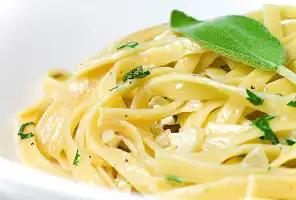



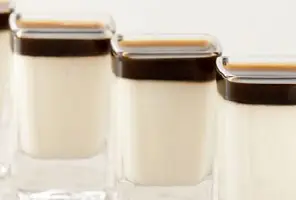
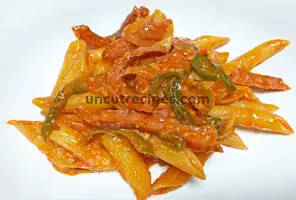

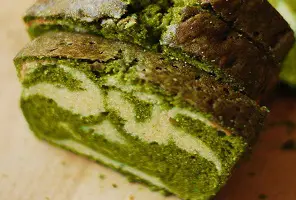




May 30, 2023
The elegance of this soup lies in its simplicity. Each spoonful unveils a symphony of flavours, from the garden-fresh vegetables to the slightly spicy ginger. It's a wonderful balance that doesn't require any additional spice to enhance it.